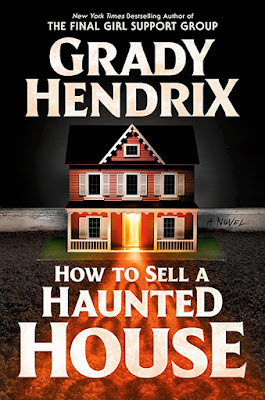Carl Heller was fortunate enough to inherit several thousand mountain acres in the high-country from his great grandfather. Instead of running a beef operation on steroids, antibiotics, and modern efficiencies, Heller uses the old-fashioned method of allowing the herd to run free, culling them once a year. He's not wealthy, and admits to barely keeping up the tax payments on the enormous property, but he manages an average lifestyle. He's a law-school dropout that is described as a playboy that enjoys riding the mountains on his horse, Kawasaki motorcycle, or race-car styled BMW. He has a lukewarm relationship with a local gal in town, a school teacher named Donna. He's in excellent shape, works out each day, and serves as a paperback version of the modern cowboy. That's the origin tale of Carl Heller.
While riding the rapids with a group of friends, Heller learns that a small group of farmers have been hoodwinked by big city shysters. The proposal by Mineral Consortium is that gold has been discovered in ecological surveys on the farmers' land. If the farmers will agree to allow Mineral Consortium to lease property, they will provide the farmers an excellent 30% royalty for all “metals” retrieved. When Heller becomes involved, he discovers that the contracts excluded minerals. The Mineral Consortium used this loophole to establish oil rigs on these leases to pull millions of gallons of oil royalty free. Their defense to the one-sided contract is that gold does exist on the property, but it's nothing more than the small grains found in seawater. They are happy to provide 30% for this small amount of gold retrieval.
Heller explains that there is a distinct difference between law and justice. To establish the character's validity, Heller confesses to Donna that he tracked down and killed a rapist that escaped a court of law. The reader gets the idea that maybe Heller has performed this sort of vigilantism more than once. Like Lawrence Block's Matthew Scudder, Heller explains that he does favors for people. So, Heller's motivation is peaked when he discusses the dilemma facing the farmers. Additionally, there is an incentive of a monetary percentage payout if the leases produce money for the farmers instead of the Mineral Consortium.
The book's first half was a real slow burn as Heller discusses legal avenues to explore. Included is a swindle Heller concocts to lead the Mineral Consortium into believing real gold does exist. To perform the trick, Heller establishes an identity of working for a mining company to construct a large mill. The evidence is convincing enough that the company wants to renegotiate the deal with the farmers. All of this consumes the book's first half, which in itself would be an average story. However, the second half makes all of the difference.
In the second half, Roderus fuels the fire with an action-packed, suspenseful narrative with Heller facing the bad guys around an oil rig at night. This was just an incredible page-turner as Heller was forced to rely on his wits to outsmart the armed gunmen. It's a violent smash-up that includes everything I love about 1970s and 1980s men's action-adventure novels. This closing second-half was well worth the price of admission.
Frank Roderus is a unique author that uses traditional western storytelling to plot modern crime-fiction. Often, he writes like a tough guy cowboy, so much that the wording is odd. For example, something like 3AM is pronounced “three ayem”. Heller's moral compass, good-guy characteristics, and the ability to be a strong, reliable protagonist kicks off the series in a promising way. This is the meat and potatoes of Roderus storytelling and The Oil Rig is recommended if you like that sort of thing. I do, so I'll be reading more.
You can buy a copy of this book HERE.




















